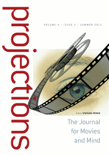
POSITIF
Scope & Guideline
Illuminating the Arts: Where Research Meets Expression
Introduction
Aims and Scopes
- Film Criticism and Analysis:
POSITIF delves into in-depth critiques and analyses of films across genres, examining narrative structures, thematic elements, and stylistic choices. - Interviews with Filmmakers:
The journal features interviews with prominent filmmakers, providing insights into their creative processes, influences, and the challenges they face in the industry. - Cinematic History and Contextual Studies:
A significant focus is placed on the historical context of cinema, including retrospectives on influential directors, movements, and significant films from various eras. - Cultural and Social Commentary:
POSITIF engages with the cultural and social implications of cinema, exploring how films reflect and shape societal issues and narratives. - Film Festivals and Events Coverage:
The journal regularly covers major film festivals, providing critiques, highlights, and discussions on the films presented, fostering a deeper understanding of contemporary cinema.
Trending and Emerging
- Diversity and Representation in Film:
There's a growing emphasis on films that explore themes of diversity and representation, particularly regarding gender, race, and LGBTQ+ issues, reflecting broader societal conversations. - Documentary and Hybrid Forms:
The journal is increasingly featuring articles on documentary films and hybrid forms that blur the lines between fiction and reality, emphasizing their relevance in today's cinematic landscape. - Environmental and Political Themes:
A trend towards exploring environmental issues and political narratives in cinema is evident, with articles discussing how films engage with climate change, social justice, and political movements. - Digital Cinema and Streaming Platforms:
The rise of digital cinema and the impact of streaming platforms on film distribution and consumption are becoming focal points of discussion, reflecting changes in how audiences engage with films. - Revisiting Film Canon and Classic Works:
There is a renewed interest in re-evaluating classic films and their relevance in contemporary discussions, including feminist and post-colonial perspectives.
Declining or Waning
- Traditional Genre Films:
There has been a noticeable decrease in articles focusing solely on traditional genre films, such as classic westerns or straightforward romantic comedies, as the journal shifts towards more complex narratives and experimental cinema. - Technical Aspects of Filmmaking:
Discussions centered around the technical aspects of filmmaking, such as cinematography and sound design, are becoming less frequent, with the journal leaning more towards narrative and thematic explorations. - Mainstream Blockbusters:
Coverage of mainstream blockbuster films appears to be waning, as the journal increasingly highlights independent and foreign films that challenge conventional storytelling.
Similar Journals

Projections-The Journal for Movies and Mind
Decoding the Cultural Impact of Cinematic NarrativesProjections: The Journal for Movies and Mind is a leading scholarly publication dedicated to exploring the intricate relationship between cinema, cognition, and culture. Published by BERGHAHN JOURNALS, this journal has made significant strides since its inception in 2015, achieving impressive rankings in its fields, including a Q1 classification in both Cultural Studies and Visual Arts and Performing Arts for 2023. With an ISSN of 1934-9688 and an E-ISSN of 1934-9696, Projections engages the academic community by delivering innovative research that scrutinizes how films influence and reflect human thought processes and societal structures. While it operates outside the Open Access model, the journal offers critical insights and diverse perspectives that are essential for researchers, professionals, and students alike. With its remarkable impact factor and solid reputation in the arts and humanities domain, Projections serves as an indispensable resource for those dedicated to understanding the psychological and cultural implications of cinematic narratives.

Transnational Screens
Transforming Perspectives on Art and Communication WorldwideTransnational Screens is a premier academic journal published by Taylor & Francis Ltd, focusing on the dynamic intersections of visual arts, performing arts, and communication in a globalized context. Since its inception, the journal has garnered significant recognition, featuring in the Q1 category for Visual Arts and Performing Arts and Q3 for Communication as of 2023, reflecting its influential contributions to these fields. With a Scopus ranking placing it in the 78th percentile in Visual Arts and Performing Arts, this journal serves as a vital platform for researchers, professionals, and students aiming to explore the implications of transnational narratives in contemporary media and artistic practices. The journal is accessible to a diverse readership and promotes open dialogue through its commitment to publishing innovative and interdisciplinary research from 2020 to 2024. As a key resource for understanding the complexities of transnational screens, it invites submissions that push the boundaries of traditional scholarship and engage with pressing global issues through the lens of the visual and performing arts.

MILLENNIUM FILM JOURNAL
Connecting Scholars and Practitioners in Film Exploration.MILLENNIUM FILM JOURNAL, published by MILLENNIUM FILM WORKSHOP INC, stands as a pivotal platform for exploration and discourse within the realm of film studies. With its ISSN 1064-5586, the journal has been noteworthy in delineating the complexities of visual arts and performing arts, contributing significantly to academic scholarship between the years 2009 to 2016, and in 2018. Though its coverage has been discontinued in Scopus, the journal has attained a respectable position within its category, ranking #320 out of 502 in the Arts and Humanities field. Researchers, professionals, and students alike are invited to engage with interdisciplinary discussions that illuminate the cultural and theoretical dimensions of cinema. While currently not offering open access options, the journal continues to serve as a vital resource for those deeply invested in the study of film, making it a respected voice in visual arts and performance research.

Film History
Unveiling the cinematic narratives that shape our world.Film History, published by Indiana University Press, is a premier academic journal that delves into the evolving landscape of cinema, illuminating the intricate interplay between historical narratives and film culture. With ISSN 0892-2160, and E-ISSN 1553-3905, this journal has established itself as a crucial resource for researchers, professionals, and students in the fields of history and visual arts. Recognized in the Q2 category for both History and Visual Arts and Performing Arts as of 2023, it boasts impressive Scopus rankings, securing #152 out of 667 in Visual Arts and Performing Arts, and #524 out of 1760 in History, placing it in the top 30th percentile. Although it does not currently offer open access options, the journal provides a wealth of scholarly articles that critically engage with film as a historical text, fostering a deeper understanding of its role in shaping societal narratives. Since its inception in 1987, Film History has been at the forefront of academic discourse, making it an invaluable resource for those seeking to explore the rich tapestry of cinematic history.

CINEASTE
Bridging Theory and Practice in Film StudiesCINEASTE is a distinguished journal dedicated to the critical exploration of cinema, providing a platform for scholars, filmmakers, and enthusiasts to engage with the complexities of film studies. Established and published by CINEASTE, this periodical serves as a vital resource for those interested in the intersection of visual arts and performing arts. Although it is not currently offered as Open Access, CINEASTE remains a respected publication within the academic community, having been indexed in Scopus until 2016. With an ISSN of 0009-7004, it has established itself despite its lower ranking in the arts and humanities category, reflecting the competitive nature of this field. Researchers, students, and professionals alike will find ample opportunities for insightful discussion and scholarly contributions to the evolving landscape of cinematic discourse. CINEASTE continues to uphold its mission of enhancing film scholarship, making it a crucial reference point for anyone eager to deepen their understanding of cinema's artistic and cultural significance.

CINEFORUM
Celebrating the Vibrancy of Visual and Performing ArtsCINEFORUM is a distinguished journal published by the FEDERAZIONE ITALIANA CINEFORUM, focusing on the vibrant field of Visual Arts and Performing Arts. With an ISSN of 0009-7039, this journal serves as a significant platform for researchers and practitioners interested in critical discussions and analyses pertaining to cinema and performance. Although coverage in Scopus discontinued in 2020, CINEFORUM has established its standing with a category ranking in the Q4 quartile for Visual Arts, reflecting its niche yet passionate readership in the arts community. Based in Bergamo, Italy, the journal aims to foster a deeper understanding of cinematic and performative texts, offering insights and scholarly contributions that enhance the discourse within these artistic domains. Catering to an audience that includes researchers, professionals, and students, CINEFORUM remains an essential resource for those looking to explore the intersection of theory and practice in cinema and performing arts.

Short Film Studies
Fostering Discourse in the Realm of Short FilmShort Film Studies is a leading journal dedicated to the exploration and analysis of short films, published by INTELLECT LTD. Since its inception in 2014, this esteemed journal has carved a niche within the realm of Visual Arts and Performing Arts, providing a critical platform for scholars, practitioners, and enthusiasts alike to engage with the unique characteristics and cultural implications of short film as a distinct medium. Despite its current position in the Q4 quartile, the journal is steadfast in its commitment to enhancing scholarly discourse and understanding in this dynamic field. With a growing repository of research, Short Film Studies aims to bridge theoretical insights with practical examination, facilitating a deeper appreciation of cinematic innovation. Its accessibility through conventional channels underscores its significance, should you wish to engage with cutting-edge research and trends. As a vibrant component of the academic landscape, this journal promises valuable contributions that resonate with researchers, professionals, and students pursuing knowledge of filmic artistry.

SIGHT AND SOUND
Celebrating the Artistry of Film and SoundSIGHT AND SOUND is a prestigious journal published by the British Film Institute, dedicated to the exploration of cinema and its cultural significance. With an ISSN of 0037-4806 and an E-ISSN matching the same, this journal has been a critical platform for film studies since its inception, contributing valuable insights to the realms of visual arts and performing arts. Despite its discontinuation in the Scopus database post-2021, SIGHT AND SOUND commands respect within its field, currently holding a Q3 rank among Visual Arts and Performing Arts journals. Operating from 21 Stephen Street, London W1P 1PL, England, it serves as a vital resource for researchers, professionals, and students looking to deepen their understanding of film theory, critique, and history. While access to its articles is not open, the journal continues to influence the discourse in film studies, making it a significant asset in academic and professional circles.

Hrvatski Filmski Ljetopis
Unveiling the Evolution of Film in Croatia.Hrvatski Filmski Ljetopis, published by the Croatian Film Clubs Association, serves as a pivotal academic journal in the field of film studies, celebrating and analyzing the rich cinematic heritage of Croatia and beyond. With an ISSN of 1330-7665, this journal caters to researchers, practitioners, and students who are passionate about the art of filmmaking, encompassing both theoretical discourse and practical implications. Although it is not currently available as an open-access publication, its curated content is of significant value to anyone interested in the evolution, critique, and history of film in a Croatian context, having previously been indexed in Scopus until coverage was discontinued. The journal operates out of Zagreb, Croatia, at the Croatian Film Clubs Association headquarters, and aims to foster scholarly dialogue while contributing to the broader field of national and international cinematography.

Atalante-Revista de Estudios Cinematograficos
Fostering Innovative Research in Cultural Studies.Atalante-Revista de Estudios Cinematograficos, an esteemed open-access journal published by ASOC CINEFORUM L ATALANTE, has been a vital platform for scholarly discourse in the fields of Cultural Studies, History, and Visual Arts and Performing Arts since its inception in 2011. With a commitment to promoting innovative research and critical analyses, Atalante has earned a commendable reputation, achieving Q2 status in Cultural Studies and both Q1 rankings in History and Visual Arts for 2023. Based in Valencia, Spain, this journal not only serves as a conduit for scholars to disseminate findings but also provides unrestricted access to its contents since 2013, fostering a more informed and engaged academic community. With its diverse range of topics and the ability to access high-quality research at no cost, Atalante plays a crucial role in advancing the understanding of cinematic studies and its contextual significance in broader cultural narratives.